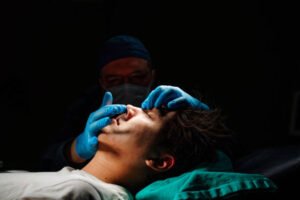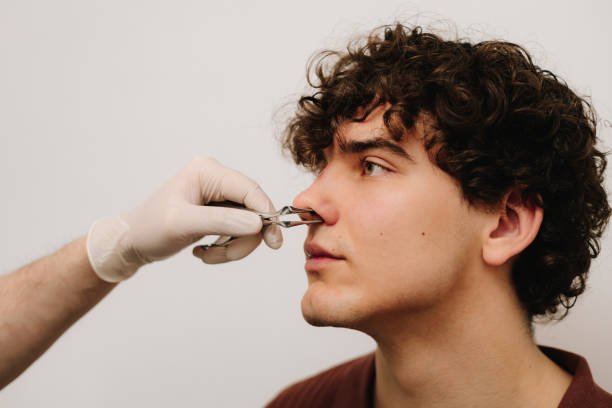Understanding Rhinoplasty: A Brief Overview
Rhinoplasty in Al Ain is a surgical procedure that alters the shape of the nose for aesthetic or functional purposes. Some undergo rhinoplasty for a refined appearance, while others seek relief from issues like nasal blockages or breathing difficulties. Al Ain has several skilled specialists who can perform this intricate surgery using advanced techniques. However, understanding that rhinoplasty is a major procedure requiring dedicated recovery time is crucial to achieving optimal results.
Importance of Post-Surgery Care
Effective post-operative care is as important as the surgery itself. Following a well-outlined recovery plan helps reduce discomfort, lowers the risk of complications, and ensures you achieve the best results. Proper post-surgery care is essential in rhinoplasty, as even small setbacks can affect the nose’s final shape and functionality.
Immediate Recovery Phase (0-3 Days)
The initial days following rhinoplasty are critical. During this period, you will likely experience some swelling, bruising, and mild pain, which are entirely normal. Your surgeon may place a nasal splint to support the nose’s new shape, and you may have nasal packing to control bleeding. It is advisable to avoid any strenuous activity, rest with your head elevated, and closely follow your surgeon’s specific care instructions.

Managing Pain and Discomfort
Managing pain is crucial during the initial days post-surgery. Surgeons typically prescribe pain relief medication to ease discomfort. Cold compresses applied gently around the eye area can help reduce swelling and numb some pain. While mild discomfort is normal, any severe pain or unusual symptoms should be reported to your surgeon immediately.
Week 1: Reducing Swelling and Bruising
By the end of the first week, bruising and swelling should begin to subside, though they may still be noticeable. Continue applying cold compresses and keep your head elevated as much as possible, as this helps in reducing inflammation. Avoid touching or putting pressure on your nose. Also, wearing glasses is discouraged during this period, as they can affect the healing tissues.
Proper Sleeping Position for Optimal Healing
During rhinoplasty recovery, the right sleeping position can make a significant difference. Experts recommend sleeping on your back with your head elevated at a 30-45 degree angle. This position minimizes swelling, promotes blood circulation, and reduces the risk of accidental impacts on the nose. It’s advisable to arrange your pillows to keep you comfortable and well-supported during sleep.
Week 2 to Week 3: Adjusting to the Changes
As you move into the second and third weeks, you’ll likely see a noticeable reduction in swelling and bruising. At this stage, you might be cleared to resume light daily activities, though you should still avoid any strenuous tasks. Exercise or vigorous movement should still be avoided to prevent disrupting the healing tissues. Continue using any recommended topical or prescribed medication as per your surgeon’s advice.
Exercise and Activity Restrictions
During the first few weeks, avoid activities that involve heavy lifting, bending, or sudden movements, as these can increase pressure and compromise the results. Generally, low-impact activities like light walking are encouraged after two weeks to promote blood circulation, but consult your surgeon before starting any exercise. It’s essential to listen to your body and avoid overexerting yourself.
Diet and Hydration for Faster Recovery
A balanced diet rich in vitamins, minerals, and protein will aid in your body’s natural healing process. Hydration is also key to maintaining good skin elasticity and overall wellness. Avoid foods that are excessively salty, as salt can increase swelling. Consuming plenty of fruits, vegetables, lean protein, and whole grains can provide the necessary nutrients for quicker recovery.
Long-Term Recovery: What to Expect
The complete recovery process after rhinoplasty can span up to a year, although most significant swelling subsides within the first few months. During this period, the nose continues to refine and adjust to its new structure. You will likely have follow-up appointments with your surgeon to monitor the healing progress. Patience is key, as subtle changes can continue to appear even several months post-surgery.
Conclusion
Recovery after rhinoplasty is a gradual process that demands patience, self-care, and attention to detail. By following these outlined steps, you can foster a smoother, more comfortable recovery, leading to optimal long-term results. Your efforts during recovery contribute significantly to the final outcome, making it essential to adhere closely to your surgeon’s instructions and give your body the time it needs to heal fully. Embrace the journey, as the results are well worth the patience and dedication.
FAQs
- How long does rhinoplasty recovery take? The initial recovery phase typically lasts about 2-3 weeks, but complete healing and refinement of the nose shape can take up to a year.
- Is pain common during rhinoplasty recovery? Mild to moderate discomfort is common, especially in the first few days. Pain is manageable with prescribed medications and cold compresses.
- When can I resume normal activities after rhinoplasty? Light activities can generally be resumed within two weeks, but strenuous exercise should wait until at least six weeks post-surgery.
- How can I reduce swelling faster? Keep your head elevated, use cold compresses, and avoid salty foods to help minimize swelling.
- Are there any foods to avoid during recovery? Avoid excessively salty foods as they can increase swelling. A balanced diet with plenty of vitamins and minerals is beneficial for healing.
- Can I wear glasses after rhinoplasty? It’s recommended to avoid wearing glasses that rest on the nose for the first few weeks. Your surgeon may provide alternative suggestions.
- When will I see the final results of my rhinoplasty? While you’ll notice changes within a few weeks, the final results will become more apparent over the next 6-12 months as swelling completely subsides.



